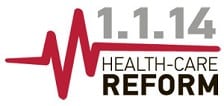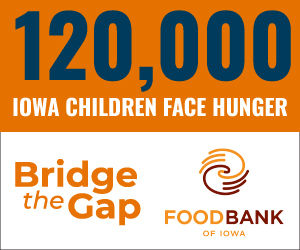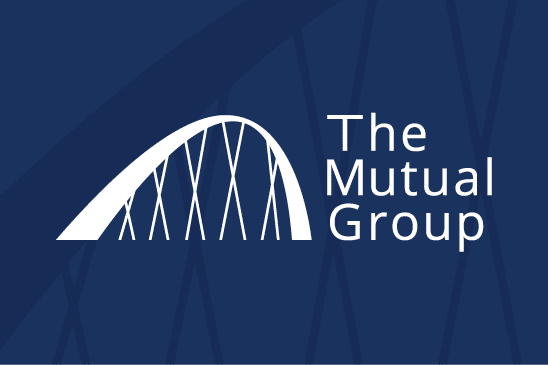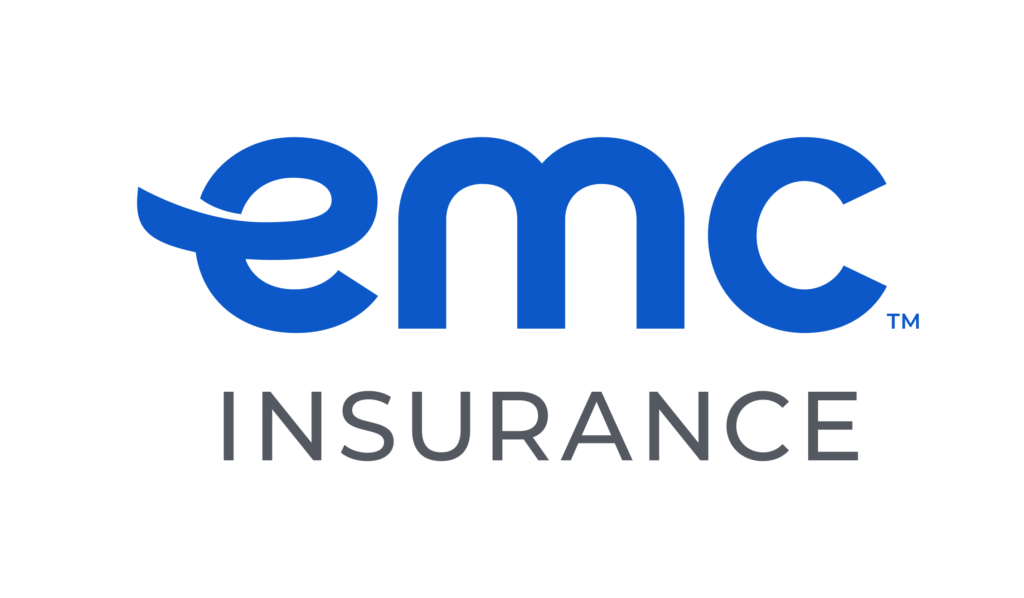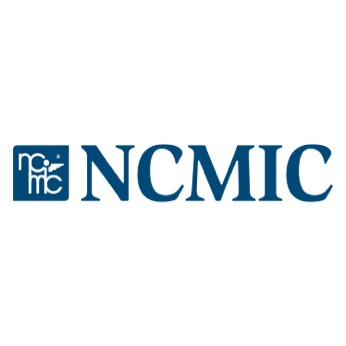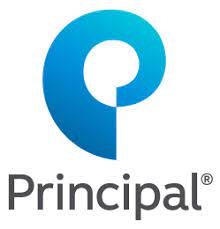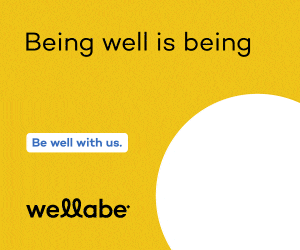How will the health-care overhaul change Iowa’s insurance landscape?

About 12 percent of Iowa’s population does not have health insurance coverage. For the majority of Iowans who do have coverage, premiums have increased at an average rate of 10 percent annually for the past decade. Whether the federal health-care overhaul can achieve the goal of reducing the uninsured population – and at the same time at least slowing the rate of increase in premiums for group and individual policyholders – remains the big question. Here are some key issues your business needs to know about how the health insurance market will change under the Patient Protection and Affordable Care Act, or if you prefer, “Obamacare.”
What’s the health insurance market like now in Iowa?
When people think about health insurance in Iowa, Wellmark Blue Cross and Blue Shield quickly comes to mind, and for good reason. The Des Moines-based insurer dominates the Iowa market, covering nearly 1.8 million customers through group, individual, Medicaid and Medicare policies. Two other companies, UnitedHealthcare and Coventry Health Care of Iowa, are the next-largest group insurers in the state, though neither has more than a 10 percent market share in the state.
Nationally, the health insurance market has been dominated by large companies such as UnitedHealth Group Inc., Aetna Inc. and Wellpoint Inc., and the passage of the Affordable Care Act in March 2010 has accelerated that trend. Since then, several major insurers have announced mergers or acquisitions, the most recent being Aetna’s announcement last month that it will purchase Coventry for $5.6 billion.
Several other insurers, among them Des Moines-based American Republic Insurance Co. and Principal Financial Group Inc., in the past two years have decided to leave the health insurance market rather than try to compete in a market more heavily laden with government regulations and oversight.
To encourage additional competition within the new health-care exchanges it mandates, the Affordable Care Act authorized a low-interest federal loan program to seed new nonprofit insurance companies around the country. In Iowa, an organization called CoOportunity received a $112 million federal loan to launch a cooperative health insurance company. The organization is among seven ventures that received a portion of $3.4 billion in loans to set up insurance companies. CoOportunity hopes to capture 5 percent of the Iowa health insurance market within its first five years.
Does Wellmark’s dominance in Iowa affect rates? When Wellmark requested state approval to increase premiums last fall, the Iowa Insurance Division commissioned two independent studies, one to address that question and another to gauge the appropriateness of Wellmark’s more than $1 billion financial surplus. The first study concluded that premiums were not affected by Wellmark’s market share, although Wellmark’s dominance “could potentially impact Iowa consumers by limiting their choice of health insurance companies.” The second study determined that it’s likely Wellmark will have to increase, not decrease, its financial reserves in response to new mandates in the health-care overhaul law.
What other changes will affect the health insurance market by 1.1.2014?
• Waiting periods: Employer group health plans may not impose waiting periods longer than 90 days.
• Pre-existing conditions: Exclusions for pre-existing conditions may no longer be imposed by group plans.
• Annual dollar limits: Group plans may not impose annual dollar limits on essential health benefits.
Health insurance coverage, 2009-2010
Source: Kaiser Family foundation
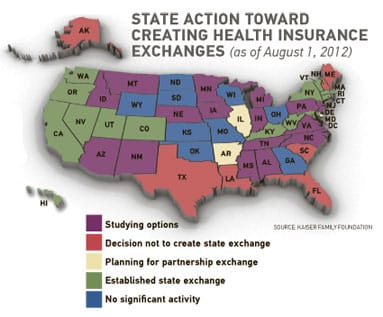
Although a number of mandates will go into effect through Jan. 1, 2014, the biggest systemic change is expected to be the creation of state- or federally operated health insurance exchanges. Iowa has received more than $33 million in federal grants to establish the computer infrastructure for such an online purchasing exchange. However, Gov. Terry Branstad is expected to wait until a Nov. 16 deadline to decide whether the state will operate its own exchange or have the federal government do it. At least 15 states have already set up their own exchanges with plans to operate them.
The good news for insurance companies is that their market could potentially expand by as many as 23 million new customers who will be required to obtain coverage under the individual mandate provision of the law on Jan. 1, 2014. Under the individual mandate, individuals who don’t purchase health coverage or get it through their employer will be subject to a fine from the Internal Revenue Service.
The exchanges are meant to provide an online tool for individuals and small business owners to compare different insurers’ health coverage offerings and to purchase a policy.
Meanwhile, officials at Wellmark say they have not decided whether the company will participate by offering its policies on the exchange, saying there is still insufficient information to know whether the exchange will be beneficial to Wellmark or its customers.

The short answer is: No one knows for sure.
The premise of requiring all Americans to purchase health insurance or have it provided by their employer is that adding healthier people who aren’t presently insured to the insurance pool will decrease risk overall and drive down rates.
From an insurance broker’s perspective, however, a $95 tax penalty for not purchasing health coverage is unlikely to compel many people to buy insurance.
“I think there are a lot of people not buying insurance today who will continue not to buy, regardless of what the penalty is,” said Steve Gooding, president of Reynolds & Reynolds Inc. “And a large percentage of that population isn’t filing taxes or paying anything, anyway, so how is (the federal government) going to get that penalty?”
Similarly, the penalty for a household that doesn’t purchase family coverage in 2016 will be $2,085 annually, a “pittance to what a family health insurance policy actually costs,” Gooding said. “So I think as this all unfolds, we’re going to see penalties become more significant to fund the health-care system that is expressed in the Affordable Care Act. So I think employers are bracing for those $2,000 or $3,000 penalties to go up exponentially.”
The average family policy premium in Iowa was $13,295 in 2011 and is projected to increase to $21,607 by 2016, according to data from Clive-based David P. Lind Benchmark.
According to a national survey of 500 health insurance agents and brokers released in June, most are expecting steep increases in premiums. Nearly 40 percent of agents responding said they expect premiums to increase between 11 and 20 percent in the next year; another third expected smaller increases of between 6 and 10 percent. Deductibles are also increasing: about half of agents (51 percent) report that currently, the most common deductible range for single coverage plans is $2,000 or more, compared with one in five who say deductibles were in this range two years ago.
Who gets subsidies?
People who don’t have insurance and who earn less than 400 percent of the federal poverty level – about $92,000 for a family of four in 2014 – will be eligible for federal income tax subsidies to help them afford insurance. Workers whose employers don’t offer what’s deemed as “affordable” group coverage under the law – premiums that are less than 9.5 percent of their pay – can also buy coverage through the exchanges.
What is Wellmark doing to prepare for health insurance changes?

“This is going to impact every area of our business and it’s a very complex topic,” she said. “So if it’s complex for us, we know that it’s going to be complex for our employers and customers. So they’re asking a lot of questions about what they need to do.”
Wellmark recently notified customers about expanded coverage available for women’s preventive health services that became effective on Aug. 1.
Helping companies to comply with the new requirements to provide a summary of benefits coverage statement for their group policies, a provision effective Sept. 23, is the next big push, Jones said.

